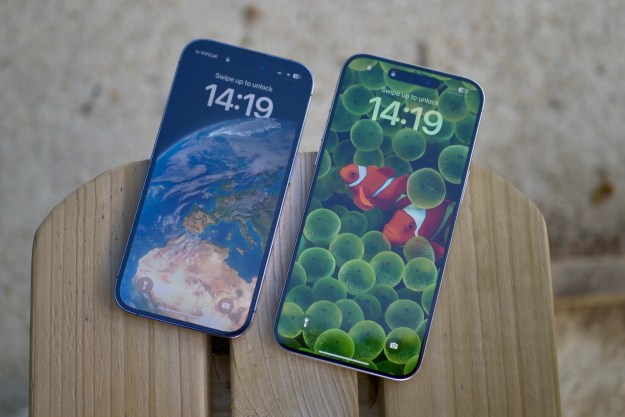We have our thoughts below, though it is a beta, so improvements may come to the technology over time.
What is Hyperlapse?
We’ve all tried making those tour videos of our house, front lawn, or drive around town with timelapse video apps. The problem is that filming while in motion makes it pretty hard to keep a camera steady, and even with a helmet cam, things like vibrations can affect the image quality and smoothness of the video. However, using some high-tech smarts, Microsoft designed a technology that turns timelapse videos like this one into smooth, enjoyable, short videos.
The app is called Microsoft Hyperlapse, and no, we’re not talking about the similarly named Instagram Hyperlapse app that’s exclusively on iOS. Still confused? Here’s Microsoft’s really complicated explanation of the difference. Microsoft says its app uses a better stitching technology and more intelligently predicts geometries to provide a smoother experience compared to Instagram’s Hyperlapse.
An app with big ambitions, but limited features
The Microsoft Hyperlapse experience begins with two pretty straightforward buttons on the menu: Import and record. Import lets you pull videos you’ve already made from your native camera app, as well as through cloud storage apps like Dropbox. The record function does everything automatically, so you don’t have to fiddle around with manual ISO, lighting, or other controls. You can turn on the backlight during the video for some extra illumination, and choose between the front or rear camera before filming, but that’s about it.
Once you import or record your video, you’ll be brought to the fairly straightforward editing experience. The video automatically replays, and there’s a bar on the bottom that lets you range the speed at which the recording will play. The video can replay from two times the normal speed, to even 32 times faster for those who leave their phones out all day to create a longer timelapse. Beyond that, there isn’t much else you can do in the editing process.
Another woe is the lack of controls for the lapse speed after you’re done filming. Once you start a timelapse, it’s set for the whole video, so you can’t slow it down at certain points to add emphasis, which is something that advanced users may want to do, especially for a 32 times timelapse that was filmed over the course of an entire day.
Smoother, faster, but with a few kinks
Once the video is finished processing, you can watch your Hyperlapse in action. The smoothing technology does an excellent job compared to the typical shaky cam experience you’d otherwise get, but it does feel a bit challenging to use for those who take walking videos without some sort of other stabilization technology. It also doesn’t help that we used the app with a large bulky phone like the Note 4, which has worse ergonomics than a professional camera or a smaller device. Even so, you can see in our sample videos that it does a fair job of minimizing shaking, especially compared with timelapse videos made with other apps.
The faster you go, it seems, the better the video experience gets. A number of demos we’ve seen from Microsoft feature videos shot from cars and bikes, which look a lot cooler than timelapses that were filmed while walking around town. The quality will probably also improve as you introduce head cams or other ways to stabilize the video.
Record first, Hyperlapse later
For those in a rush, it’s worth noting you will need to sit tight with your phone after completing a Hyperlapse. The process isn’t done in the background, and depending on how long your video is and how you timelapse it, it can take a fair amount of time to process, even on a device as powerful as the Note 4. At the very least, it’d be helpful to let the video process in the background, and then notify the user when it’s finished, so they can go back to using their phone. This is also likely a battery killer, since it is processor-intensive video post-processing.
Another woe we have with the app is that there’s no way to revisit videos recorded in Hyperlapse. If you decide something is too fast and want to slow it down, you better have originally recorded it somewhere other than on Hyperlapse. You could save a normal speed version, then go back and import it, and put it into Hyperlapse later, but that kind of defeats the purpose of the app, and is not intuitive at all. Still, we highly recommend folks use their preferred app for video recording, and just use Hyperlapse when they want to make a particular video into an interesting timelapse.
Hyperlapse is a good first attempt by Microsoft at its research-backed timelapse technology. However, the app definitely needs some improvements in the UI and overall user experience. The technology works pretty well for even the shakiest of videos, and the results range from comical to stunning, depending on what you’re filming. We just wonder if Hyperlapse can survive as an app without better editing tools and other key features. That said, it’s still in beta, so Microsoft could improve Hyperlapse before it finally launches as an official app.
To download it and try it for yourself, you’ll need a compatible Android for Windows Phone device. Click here for the details on how to join the beta and give it a spin.
Editors' Recommendations
- There’s a big problem with the iPhone’s Photos app
- iOS 18 could make my iPhone look like Android, and I hate it
- No, the Journal app on your iPhone isn’t spying on you
- Apple Sports app looks to rule live scores and stats on iOS
- The best iPhone and Android apps for Black History Month 2024




